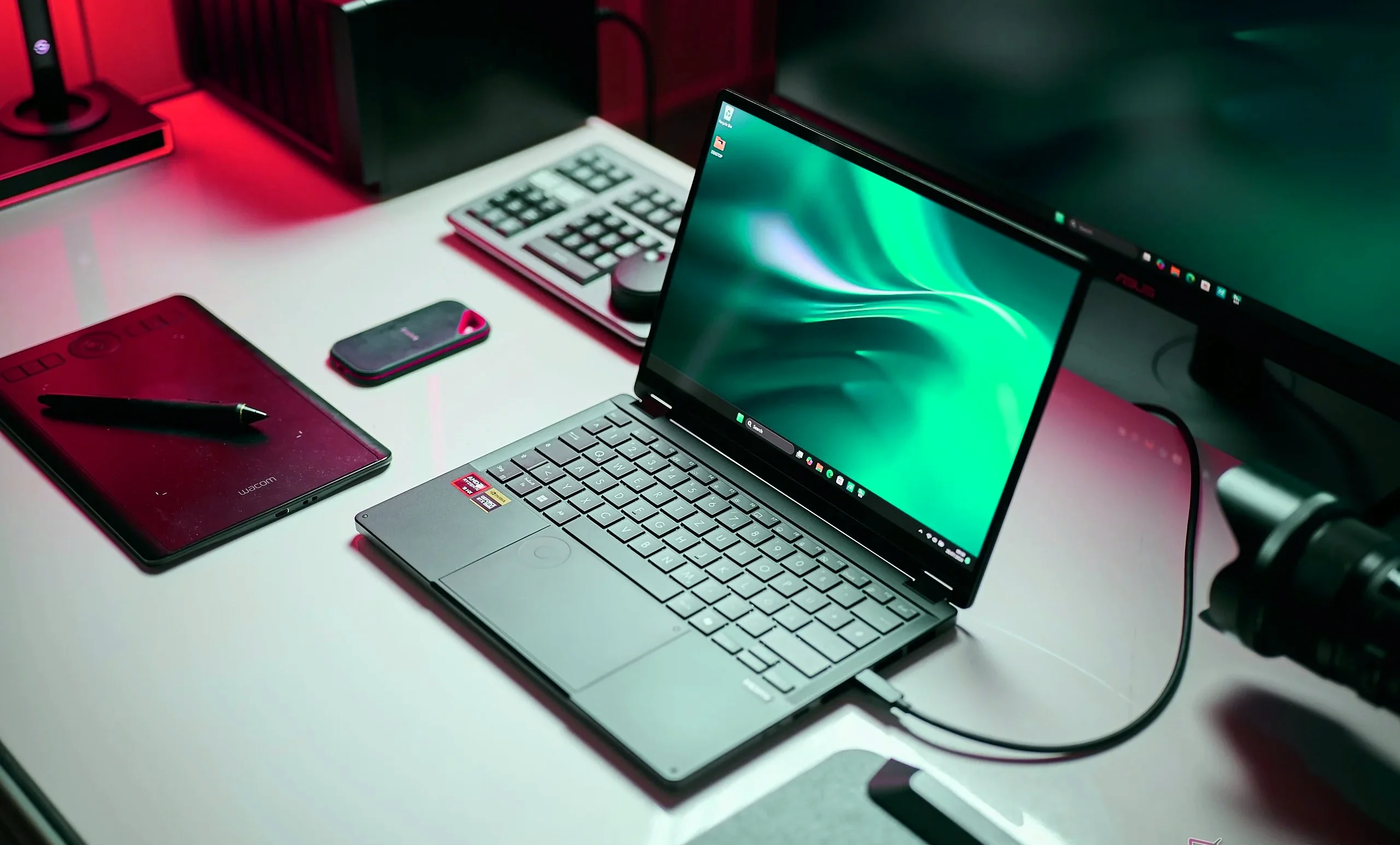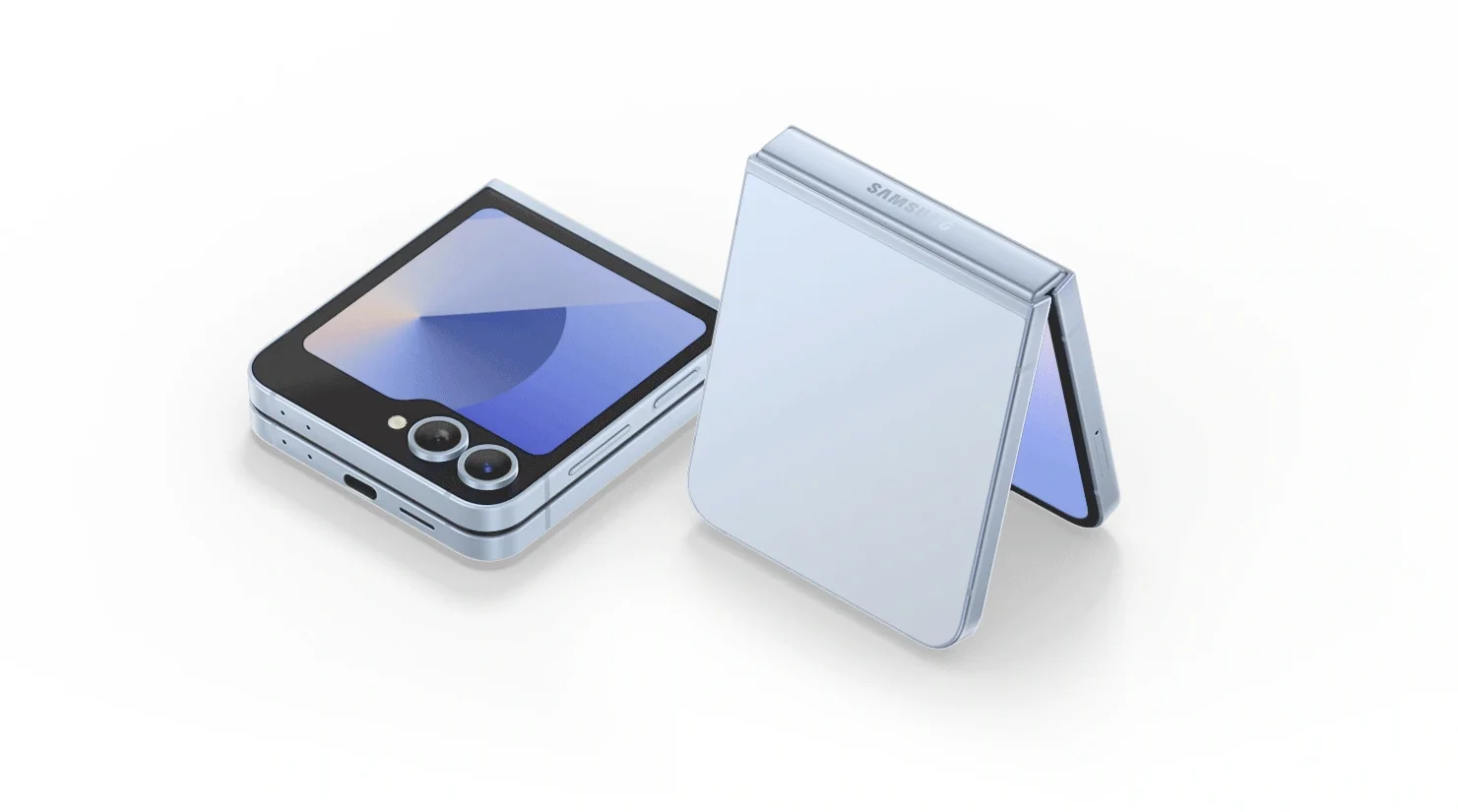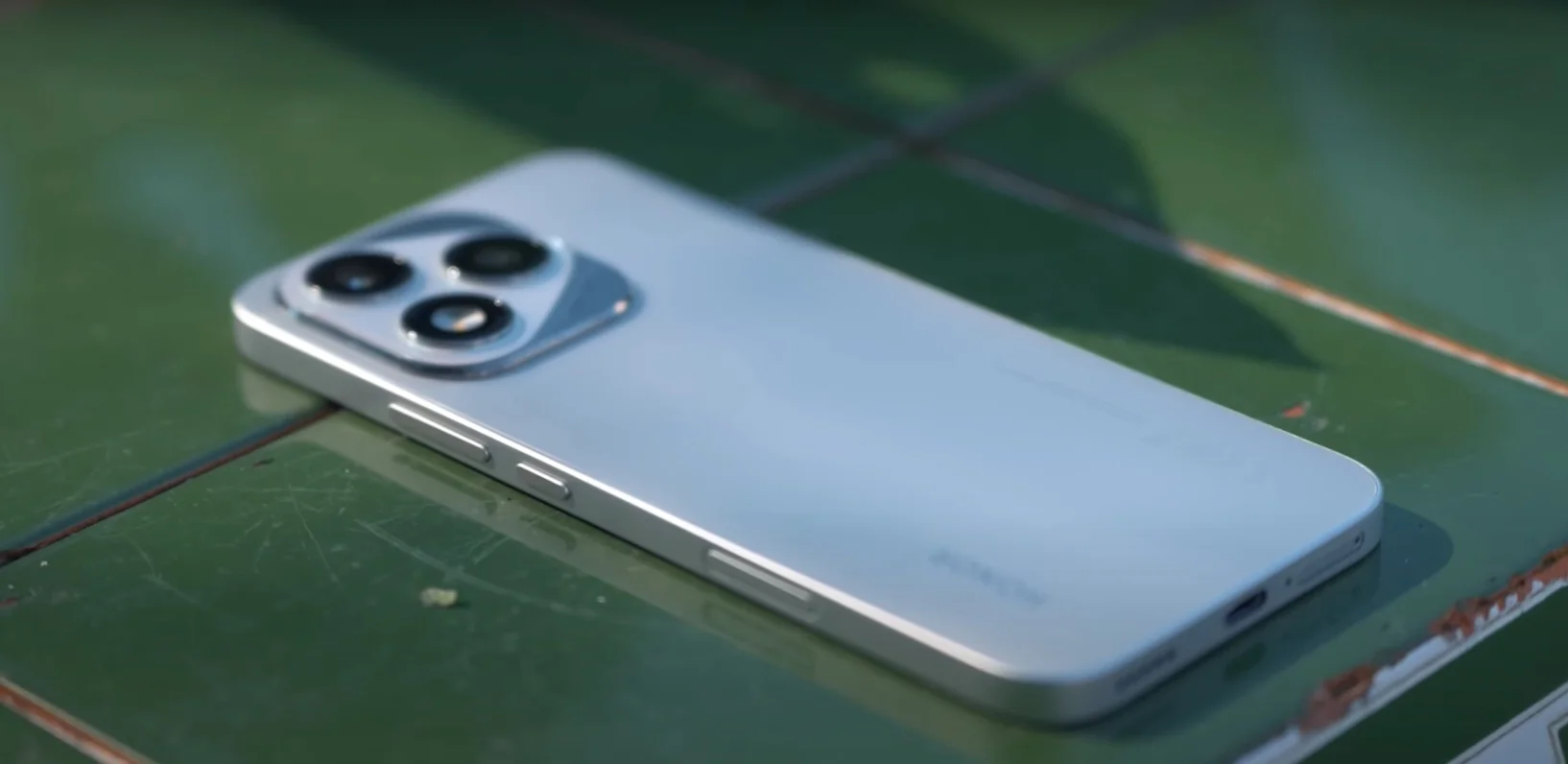I have had the opportunity to try out the Nothing Phone (2a) Plus, the latest mobile phone from Nothing, which is one of the most interesting mid-range phones thanks to its good performance and excellent design.
After making a name for itself with its first products between 2021 and 2022, Nothing has been wanting for some time to be not only that different brand that we have heard so much about, but also to be able to attract any user with an increasingly varied and attractive catalog.
Carl Pei’s brand, formerly OnePlus and which embarked on a solo career, has realized that it could not ignore the mid-range market and in the last year has launched both its CMF brand, of basic devices, and a series of mid-range variants of its most popular products such as Nothing Ear headphones (a) or the Nothing Phone (2a) mobile phone.
Now, as part of this strategy, Nothing has decided to up the ante and make things more difficult for those looking for a mid-range mobile phone with the launch of a new variant: the Nothing Phone (2a) Plus, which was presented a month ago and will finally go on sale on September 10th, with pre-sales starting on September 6th.
Perhaps it is a somewhat confusing name that suggests that it is just a bigger version of the Phone (2a) from a few months ago, but in reality it is not: it is a more premium mobile, which is in the upper-middle range, between the Phone (2a) and the Phone (2).
I’ve had the opportunity to test the Nothing Phone (2a) Plus over the last week and I’ve seen that it really is the different yet powerful device that many of us expected from the brand that entered this sector promising to make technology fun again.
Design and connectivity: this mid-range device is up to Nothing’s standards

When the interesting Nothing Phone (2a) was launched, many of us were disappointed because it lagged behind in terms of design, precisely one of the aspects that has been one of Nothing’s hallmarks since its inception.
In this Nothing Phone (2a) Plus, I think Carl Pei’s brand has managed to get rid of that thorn because it has achieved a design almost as refined as that of its high-end phones. In general, the improvement with respect to its younger brother in just a few months is enormous.
The Nothing Phone (2a) Plus has the brand’s characteristic transparent design on the back that reveals its internal components and the LEDs of the Glyph interface.
In the hand, its materials (glass on the back and metal on the edges) seem of much better quality than in the standard Phone (2a), which is more plastic. The current phone is more pleasant to the touch, seems more resistant and the design of the components can be seen much better, especially in the light gray version that I have been able to test; there is another one available in black.
The glyphs appear here in a reduced version, identical to the Phone (2a), with only three LEDs distributed around the dual camera. Their use is somewhat more limited than in the high-end Nothing, but there is no doubt that they provide a striking and different aesthetic that captures everyone’s attention when they are in operation.
The camera, meanwhile, consists of two sensors aligned horizontally in the center of the phone and integrated into the body. That bold design wins me over again, although at first it may surprise you, since in the Android ecosystem it is only maintained by Google Pixel, but it has disappeared from most brands in favor of vertical modules.
Otherwise, the Nothing Phone (2a) Plus is a flat-screen mobile with flat edges and fairly small bezels for a mid-range phone thanks to its flexible screen, in line with the brand’s philosophy. I found it to be a relatively light mobile, at 190 grams, and its 8.5-millimeter profile seemed slimmer than I thought thanks to the slightly curved glass on the back.
In terms of connectivity, the firm has not left anything important behind and the Nothing Phone (2a) Plus has all the minimums you would expect in a powerful mobile phone in 2024, such as 5G and Bluetooth 5.3, although it stops at WiFi 6 and it would have been appreciated to have at least WiFi 6e.
Screen: a high-quality AMOLED panel for its range
The screen is usually one of the strong points of any device and in this Phone (2a) Plus it has achieved one of the best panels in the current mid-range, which could be improved in some aspects but which stands out for being under 430 euros.
It uses an AMOLED panel, like the rest of the brand’s phones, with 6.7 inches very well integrated into its flat design, with rounded corners and fairly narrow bezels reminiscent of the high-end range. The use of AMOLED technology allows for extraordinary reproduction and deep colors, something that is fulfilled in this Phone (2a) Plus.
But in addition, the terminal exceeds the expectations normally assumed for the mid-range thanks to its 120 hertz refresh rate that achieves fluid movement, an FHD+ resolution (1,084 x 2,412 pixels) that is not bad at all and even resistance through Corning’s Gorilla Glass 5.
If I have to highlight one point where the Nothing Phone (2a) Plus screen has not completely convinced me, it is the brightness. The brand explains that the typical brightness is 700 nits, that outdoors it is 1100 nits and that the maximum brightness peak reaches 1300 nits.
If you have become accustomed to using a high-end mobile phone in recent years, as is my case, this maximum brightness will seem somewhat low, especially in bright outdoor settings and in full sun, where the panel suddenly seems somewhat dark and exposed to reflections.
As for the sound, it doesn’t promise anything up to 72 decibels of maximum power and the truth is that it reaches a fairly high volume without producing too much distortion. The sound is stereo, yes, but the only output of the main speaker is at the bottom, so it’s easy to cover it up when holding the phone horizontally, like when playing video games.
Performance: a huge improvement in power

For the initial Nothing Phone (2a), the British brand opted for a Dimensity 7200 Pro processor that did not convince in terms of performance in the tests carried out by the Computer Hoy team, but this Phone (2a) Plus has made up for its mistake.
In this smartphone, it has chosen the Dimensity 7300 Pro, a high-end MediaTek chip with 4-nanometer architecture that comes with a much stronger track record in respectable devices. For example, it is the processor in Oppo’s Reno 12 series.
The Nothing Phone (2a) Plus is a mobile phone that offers what I would expect from a mid-range model of this brand in terms of performance, with very fast operation and the ability to perform several tasks simultaneously and with good productivity. I have been able to have dozens of applications open at the same time and not notice any slowdown, with very fast downloads and application opening.
All this is helped by its 12 GB of RAM, not bad for its price segment, and the 256 GB of storage in its unique configuration in Spain. You don’t have other variants to choose from, so the brand makes it easy for you.
Static performance tests show that the Nothing has managed to match the series that are currently the great reference of the mid-range with great performance, such as the Nord families of OnePlus and Poco of Xiaomi.
The Dimensity 7300 Pro manages to gain a certain advantage over phones with the standard version of the processor, some even priced above 100 euros, so you can see the good work of Nothing and MediaTek. However, it is still a long way from Qualcomm’s Snapdragon 8, which is already found in some mid-range phones.
Without being a gaming phone in terms of raw power and graphics, the Nothing Phone (2a) Plus can be used without problems for competitive video games thanks to its good performance and the high refresh rate screen.
In several simultaneous online real-time 10-minute games of Pokémon Unite, I didn’t notice the device getting too hot, which is certainly a good benchmark for its power management and speaks well of MediTek’s work and TSMC’s 4nm architecture.
Software: Nothing OS continues to offer a genuine Android but with personality in which the glyphs stand out

In terms of software, the Nothing Phone (2a) uses the brand’s own interface, Nothing OS, which I still think is something that really sets the brand apart from the rest, as it is almost stock Android and has a very striking design with features you won’t find in other brands.
It runs on version 2.6 of Nothing OS, which is based on Android 14, Google’s latest operating system, the virtues of which are already well known.
I like the highly technological design that it always gives to its interface, with elements based on points that in this model are complemented by a great possibility of customization, but which in essence is stock Android with a facelift.
The brand offers different widgets, such as a digital wellbeing widget on the home screen that warns you if you are abusing your smartphone through an emoji, without overwhelming you with too much data. Its weather widget also has an aesthetic that gives the home screen a different personality.
Perhaps the aspect that gives it the most personality is the possibility of configuring the glyph interface to your liking, which has 26 different uses depending on the brand.
Now Nothing’s glyphs are more like what I expected them to be at the beginning: an advanced way of notifying you without having to keep an eye on the screen, which is activated automatically when you turn the phone.
You can choose which apps you want to be included in these notifications and add them to Essentials. In my case, WhatsApp and Telegram as my personal apps and Slack as my professional app were the obvious choices, but it depends on your usage.
But beyond this, it’s fun to set up glyphs for tasks you would normally do with the screen, like setting a timer or controlling the volume level. I would have liked to have a glyph at the bottom like on the phone (1) and (2), because knowing the battery level when you charge it always seemed to me to be its most useful function, but hey, nothing’s perfect.
To this you can add 3 years of operating system updates and 4 years of security patches, guaranteed by the manufacturer. It’s not the best in this sense, but it’s in line with the current mid-range.
Cameras: few sensors, but with good results
Nothing is not the best known brand for its cameras, with which it tends to be quite minimalist, and this Phone (2a) Plus is no exception.
Its camera configuration is more limited in terms of sensors than other mobiles, both in other price segments and in the mid-range. Without spoiling what you are going to see, let me tell you that its performance, although limited, has surprised me in a good way in many situations.
Before going into detail, these are all the sensors in the Nothing Phone (2a) Plus camera:
Main rear camera: Samsung GN9 50 megapixels, f/1.88, OIS.
Secondary rear ultra-wide-angle camera: Samsung JN1 50 megapixels, f/2.2.
Front camera: Samsung JN1 50 megapixels f/2.2.
The use of three sensors with the same resolution, 50 megapixels, and from the same manufacturer, Samsung, is a pleasant novelty in the Nothing, as it provides a good aesthetic consistency in the results in different situations.
As can be seen in this example, the colors and the result obtained with the main sensor and with the ultra-wide angle of the rear camera are very similar, even in extreme conditions such as this backlit sunset.
The portrait mode fulfills its function with distinction in this Nothing Phone (2a) Plus. This camera function manages to highlight the figure against the background with more flattering lighting.
As for the crop, I was surprised by its precision in the hair, which although not perfect and has blurred some loose strands, in general it works and also achieves a quite natural effect in the background, far from excessive distortions.
However, if there is one camera on which I like portrait mode better, it is the front camera. The 50-megapixel sensor produces bright, high-quality selfies, and the only thing I would ask of the front camera is the ability to take slightly wider shots if you want to take a group selfie.
Portrait mode also considerably improves the final result, with a very flattering warm light on the face and a very natural blurring of the background. Of course, the precision worsens, and here you can see that not many strands of hair appear.
The weakest point of the Nothing Phone (2a) Plus camera is the zoom, as it lacks a telephoto lens, and even a small zoom greatly worsens the result.
The phone has a digital zoom that only goes up to 10x, and in fact the loss of quality starts to be very evident when you go above 3 or 4 times, with an unconvincing watercolor effect. In addition, the shots become excessively dark.
In fact, in certain situations such as night mode or video, even 2x can work really badly and I advise against it.
The video has surprised me in a good way in many situations thanks to the good quality of Samsung’s sensors, but not so much in others.
Despite the fact that the main camera has OIS, the Nothing app still needs a lot of optimization work to make it noticeable when recording video, something that I hope will improve over time because at the moment I find it a problem.
Battery life: an exceptional battery that lasts more than a day

In this Phone (2a) Plus, Carl Pei’s brand has achieved a battery that is undoubtedly one of its strong points.
The phone has a decent capacity of 5000 mAh, which manages to excel thanks to the good thermal management of the Dimensity 7300 Pro, giving it a battery life that in my tests has always exceeded a day’s use by a margin, even after hours of playing games and taking dozens of photos and videos.
It’s not enough for two full days of use, so halfway through the second day you’ll have to charge it at some point if you don’t want it to let you down, but it’s a good starting point for a modern cell phone.
Charging is the only aspect that slightly tarnishes what could be a perfect section. Firstly, because the fast charge is only 50 watts, below what you can find in other handsets in the same range, especially with MediaTek chips, which are around 100 W.
Secondly, the charger is not included in the box, only the cable, so you will have to buy it separately. The original 45 W adapter costs 35 euros, so it’s not exactly cheap, although with PD3.0 you can buy a cheaper one from a third party. In my tests I can confirm that it goes from 15 to 100% in 50 minutes, so it lives up to the brand’s promise of 56 minutes from 0 to 100%.
And thirdly, because the Nothing Phone (2a) Plus does not allow wireless charging, despite the fact that its glass back may suggest otherwise.
Verdict: is it worth buying a Nothing Phone (2a) Plus?

The Nothing Phone (2a) Plus is a phone that has fallen from the sky into the brand’s mid-range because it is what many of us have been waiting for and I honestly believe that it does not disappoint at all for the 429 euros that it costs as standard and that the price will surely drop over time making it even more attractive.
Its design is clearly a step forward with respect to the brand’s previous mid-range model, and it has that distinctive Nothing personality with a transparent back, but at the same time it feels much better in the hand and the materials are of higher quality, although the glyphs are more basic than on the Phone (2).
It is a mid-range handset that is really easy to recommend, especially for those users who don’t want to spend too much but also don’t want to compromise on performance, with an internal powerhouse in which MediaTek surprises for the better with the Dimensity 7300 Pro.
If you add to that a battery with a fairly good autonomy of more than a day, an operating system that is stock Android but full of nods to the past and a camera that works surprisingly well despite its basic configuration, the Nothing Phone (2a) Plus is undoubtedly one of the best mid-range phones of 2024 and offers fantastic value for money for 220 euros less than what the brand’s best phone, the Phone (2), is worth now.



